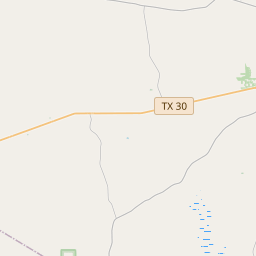First Baptist Church of Huntsville
Historical marker location:






One of the earliest Baptist congregations in Texas, this church was organized in 1844 by The Rev. Z. N. Morrell, who served as first pastor. The Rev. J. W. D. Creath, a missionary from Virginia, was the second, and The Rev. G. W. Baines, known now as an ancestor of U.S. President Lyndon Baines Johnson, was the third. General Sam Houston, ex-president of the Republic of Texas, was a member. The congregation dedicated its first church building in 1851; it was on this site. A bell added in the 1850s became a pride of the city.
This church hosted the Baptist State Convention five times in the 1850s and 60s. One of the first regular Sunday schools in Texas functioned here by 1864. Blacks in the membership requested and received letters of dismission in 1868, to organize a church of their own. After Sam Houston Normal Institute (now Sam Houston State University) was established in 1879, many of its people came to augment the leadership in this church.
The congregation has erected houses of worship in 1891, 1924, and 1954. Throughout its history, it has promoted and financed mission work, and has helped to organize and encourage other congregations
As one of the most visible programs of the Texas Historical Commission (THC), historical markers commemorate diverse topics in Texas history, including: the history and architecture of houses, commercial and public buildings, religious congregations, and military sites; events that changed the course of local and state history; and individuals who have made lasting contributions to the state, community organizations, and businesses.
The state flower of Texas is the bluebonnet. The flower blooms in the spring and is a common sight along the highways and in fields throughout the state.
In 1836, Walker County was officially established and named after Samuel Hamilton Walker, a Texas Ranger captain who died in the Mexican-American War. The county became a hub for trade and commerce, with the town of Huntsville serving as the county seat. The early residents engaged in farming, ranching, and timber industries, which became the backbone of the local economy.
During the Civil War, Walker County played a significant role as a major supplier of food and provisions to the Confederate army. However, the county also faced its share of hardships, including raids by Union troops and the devastation caused by the war. After the war, Walker County experienced a period of reconstruction and gradual recovery.
In the late 19th and early 20th centuries, Walker County saw significant progress and development. The expansion of railroads brought new opportunities for trade and transportation, and the discovery of oil in the early 1900s further boosted the local economy. In recent decades, Walker County has continued to grow and evolve, embracing modern industries while preserving its unique heritage and natural beauty. Today, the county is known for its thriving educational institutions, correctional facilities, and vibrant community.
Walker County Timeline
This timeline provides a condensed summary of the historical journey of Walker County, Texas.
- 1836: Walker County is established
- 1846: Huntsville becomes the county seat
- 1861: Walker County residents vote for secession from the Union
- 1870: The Houston and Great Northern Railroad reaches Huntsville
- 1900: The town of New Waverly is incorporated
- 1936: Sam Houston State Teachers College is established
- 1965: The Texas Department of Corrections is established in Huntsville
- 1970: San Jacinto Mall opens in Baytown
- 1999: The City of Huntsville celebrates its 150th anniversary
- 2007: The Texas Department of Criminal Justice moves its headquarters to Huntsville